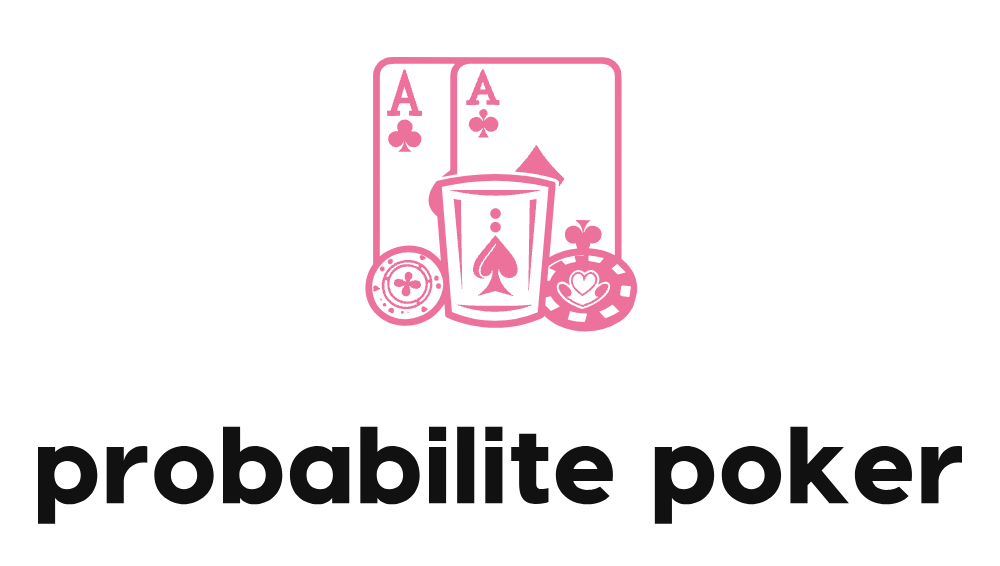In the thrilling world of poker, we find ourselves drawn to the allure of high-stakes games and the intricate strategies that separate the novices from the masters. Mastering the art of winning becomes not just an ambition, but a necessity.
Together, we embark on a journey to uncover advanced poker techniques that transcend basic play. We delve into the nuanced tactics that can shift the balance of power at the table.
Key strategies include:
- Reading opponents with precision
- Deploying calculated bluffs
This exploration is not merely about the cards we hold, but about the psychological warfare and strategic foresight that define true poker mastery.
Let us venture into the depths of poker strategy, where every decision counts and every technique could be the key to our next victory.
Understanding Hand Ranges
Understanding hand ranges is crucial for enhancing our decision-making process at the poker table. By grasping this concept, we can anticipate our opponents’ possible cards and make more informed moves.
Hand ranges refer to the spectrum of hands an opponent might hold based on their actions. This shared knowledge helps us read the table more accurately and feel more connected with fellow players who also appreciate the strategic depth of the game. It’s one of those poker techniques that brings us closer together as a community of players striving to improve our skills.
Incorporating hand ranges into our gameplay allows us to adjust our strategies dynamically. We’re not just playing our cards; we’re reading the room, picking up on subtle cues, and making educated predictions.
This technique empowers us to make calculated decisions, whether to:
- Fold
- Call
- Raise
These decisions are based on probability and logic rather than gut feeling alone.
Together, we enhance our collective expertise, making poker not just a game, but a shared journey of learning and growth.
Exploiting Positional Advantage
Maximizing Positional Advantage in Poker
Understanding our positional advantage at the poker table is essential for gaining a strategic edge over our opponents.
Key Advantages of Late Position:
- Being in a late position allows us to:
- Observe others’ actions before making our move.
- Gain valuable insight into opponents’ strategies.
By exploiting this advantage, we transition from merely playing cards to playing people, using our knowledge to outsmart them.
Adapting Techniques for Late Position:
- When seated in a late position, we should:
- Widen our range of playable hands.
- Play more aggressively.
- Apply pressure on those acting first.
By doing so, we dictate the pace and flow of the game.
Strategic Focus:
- Remember, success in poker is not solely about the cards we hold; it’s about:
- The story we tell.
- The pressure we apply.
By mastering our positional awareness, we can turn the tides and consistently find ourselves in the winner’s circle.
Mastering Bet Sizing
Bet sizing is a crucial skill in poker that helps us manipulate opponents’ decisions and control the pot’s dynamics. By mastering this aspect, we can enhance our poker techniques and feel more connected with fellow players who appreciate the game’s intricacies.
When we make a bet, we’re not just tossing chips mindlessly; we’re sending a message, and it’s vital that our bet sizes align with our intended strategy. In poker, the size of our bet can signal strength or weakness, and knowing how to adjust it allows us to steer the game in our favor.
For instance:
- Small bets might entice opponents to call with weaker hands.
- Larger bets could pressure them into folding.
We must learn to read the table and adjust our bet sizing to exploit opponents’ tendencies.
By practicing these poker techniques, we not only improve our own game but also deepen our connection with the poker community, all striving for mastery together.
Let’s embrace this journey and elevate our play!
Utilizing Board Texture
Understanding board texture is essential for making informed decisions during a hand, as it reveals potential threats and opportunities based on the community cards. As a group of poker enthusiasts, we recognize that assessing the board texture allows us to gauge the hand strength of our opponents and adjust our strategies accordingly.
Board Texture Types:
- Dry Board: Few connections and potential draws.
- Wet Board: Numerous drawing possibilities.
Incorporating Advanced Poker Techniques:
-
Analyze Board Texture:
- Compare the board texture with your hand.
- Consider the range of hands your opponents might hold.
-
Adjust Strategy Accordingly:
- On a wet board, proceed with caution if opponents might be on a draw.
- On a dry board, consider more aggressive betting.
By focusing on the texture, we can determine whether the board is dry or wet, thereby influencing how we play our hand. Together, we hone these skills, ensuring that we’re not just playing our cards, but also anticipating potential moves in this dynamic poker landscape.
Developing Table Image
Building a strong table image is crucial as it influences how opponents perceive and react to our playing style. By mastering poker techniques, we can craft an image that either intimidates or lulls our adversaries into a false sense of security. Our table image becomes a psychological weapon, shaping the dynamics of the game in our favor.
Playing Styles and Their Effects:
-
Aggressive Play: When we play aggressively, others might fold more often, fearing our bold moves.
-
Tight Image: Conversely, a tight image can invite bluffs from those who underestimate our hand strength.
Key Elements:
-
Consistency: Ensure that your table image consistently reflects your strategic decisions.
-
Adaptability: Tailor your image to the evolving dynamics of the game.
Community and Strategy:
We’re part of a community where understanding these subtleties can elevate our skills. Observing opponents’ reactions and adjusting our image accordingly creates a sense of belonging at the table—a shared language of strategy and insight.
Conclusion:
Let’s embrace these poker techniques to not just play, but to dominate, weaving our presence into the fabric of each hand.
Implementing GTO Principles
Implementing Game Theory Optimal (GTO) Principles
Implementing Game Theory Optimal (GTO) principles allows us to create a balanced strategy that minimizes our opponents’ ability to exploit weaknesses in our play. By adopting GTO principles, we’re not just playing our hands; we’re engaging with a deeper layer of poker techniques that empower us to make decisions based on probability and strategic equilibrium.
Benefits of GTO Principles
This approach unites us with a community of players who value precision and understanding, strengthening our collective pursuit of mastery. When we focus on GTO, we adjust our ranges and bet sizes to ensure our actions can’t be easily countered. Rather than being predictable, we become a dynamic force at the table.
Proactive Game Shaping
This shared commitment to GTO principles means we’re not just reacting to others; instead, we’re proactively shaping the game. These advanced poker techniques provide us with the confidence to handle any situation, knowing we’ve prepared our minds and strategies to tackle the complexities of poker with skill and camaraderie.
Incorporating Meta-Game Strategies
To elevate our poker game, we must delve into meta-game strategies that consider not just the cards but also the players’ tendencies and the psychological dynamics at the table. By understanding these elements, we can anticipate opponents’ moves and adjust our play accordingly. Meta-game strategies require us to read not only the immediate situation but also to gauge the broader, evolving context in which we’re playing.
Developing Meta-Game Techniques:
- Become adept at identifying when someone is bluffing.
- Recognize when an opponent’s confidence wavers.
- Observe and analyze patterns in betting behavior.
By mastering these techniques, we can exploit weaknesses and optimize our strategies. It’s about reading the room, sensing unwritten signals, and making informed decisions that set us apart.
Together, we can build a community that thrives on shared knowledge and insights, fostering an environment where everyone feels included in the journey toward mastery.
By integrating meta-game strategies, we enhance our ability to outthink opponents and deepen our connection to the game.
Practicing Bankroll Management
Effective bankroll management is crucial for ensuring we can weather the inevitable ups and downs of poker without jeopardizing our financial stability. As a community that thrives on strategic wins and shared experiences, understanding how to manage our bankrolls ensures we stay in the game longer and enjoy the camaraderie that poker brings.
Allocate a Specific Portion of Funds
By allocating a specific portion of our funds solely for poker, we protect ourselves from emotional decisions and financial strain. This involves:
- Setting limits on buy-ins and stakes that align with our individual financial situations.
- Ensuring we play confidently within our means.
Track Progress Meticulously
We also track our progress meticulously. Keeping a detailed record of our wins and losses provides insights into our habits and helps us refine our strategies over time. This practice involves:
- Recording every session’s results.
- Analyzing patterns in wins and losses.
- Adjusting strategies based on data-driven insights.
Benefits of Effective Bankroll Management
Practicing effective bankroll management not only sustains us but enriches our collective poker journey. It ensures we all continue to grow and succeed by:
- Promoting financial stability.
- Enhancing strategic play.
- Fostering a supportive community.
Overall, effective bankroll management is a foundational aspect of enjoying and succeeding in poker, both individually and as a community.
What mental strategies can help maintain focus and composure during long poker sessions?
To keep our focus and composure during long poker sessions, we rely on mental strategies like deep breathing, visualization, and positive self-talk. These techniques help us stay calm under pressure and make better decisions at the table.
Key Techniques:
- Deep Breathing: Helps to reduce stress and maintain focus.
- Visualization: Allows you to mentally rehearse scenarios and strategies.
- Positive Self-Talk: Encourages a constructive mindset and confidence.
By practicing mindfulness and maintaining a positive mindset, we can navigate the highs and lows of a poker game with confidence and resilience.
Remember, our mental game is just as important as our technical skills at the poker table.
How can I effectively manage and mitigate the emotional impact of bad beats in poker?
When bad beats shake our confidence in poker, it’s crucial to stay composed and focused.
We can manage these emotional swings by reminding ourselves that variance is a natural part of the game. By maintaining perspective and staying grounded, we can navigate through tough moments with resilience.
Here are some strategies to manage these emotional swings:
- Remind yourself that variance is a natural part of the game.
- Maintain perspective and stay grounded during tough moments.
- Share experiences with fellow players to process emotions.
- Seek support to help bounce back stronger.
Together, we can overcome setbacks and continue improving our game.
What lifestyle habits can improve cognitive performance and decision-making at the poker table?
We find that maintaining healthy habits is crucial for enhancing cognitive performance and decision-making abilities at the poker table.
Key healthy habits include:
- Regular exercise
- Proper nutrition
- Sufficient sleep
By prioritizing self-care and staying physically and mentally fit, we can:
- Sharpen our focus
- Boost our memory
- Make more calculated choices during gameplay
These lifestyle choices help us stay sharp and on top of our game when it matters most.
Conclusion
You’ve now learned the essential strategies to elevate your poker game. By mastering hand ranges, exploiting positional advantage, and utilizing advanced techniques like GTO principles, you are well on your way to becoming a formidable player at the table.
Remember to also focus on developing your table image and implementing meta-game strategies to keep your opponents guessing.
With practice and disciplined bankroll management, you are set to dominate the game of poker like never before.
Good luck and keep honing your skills!

